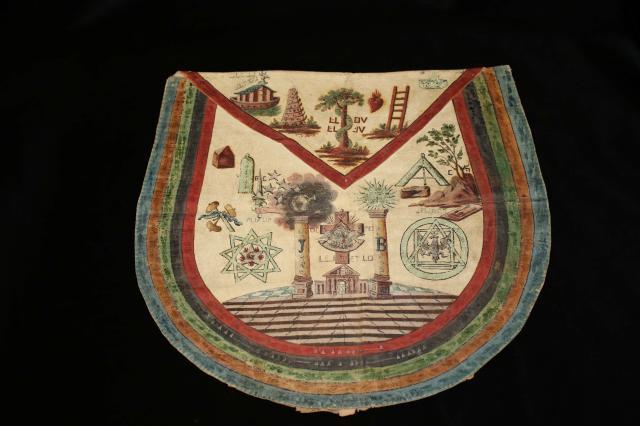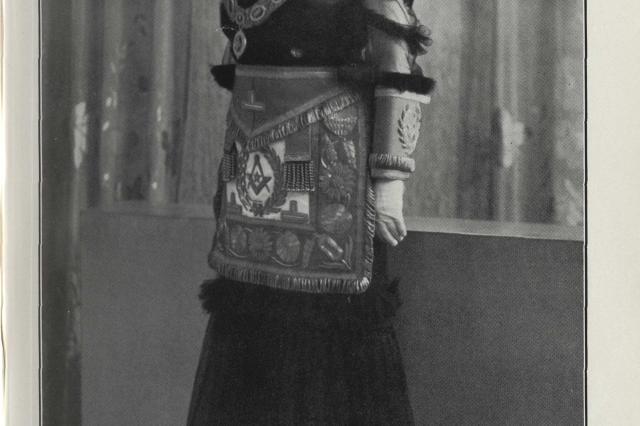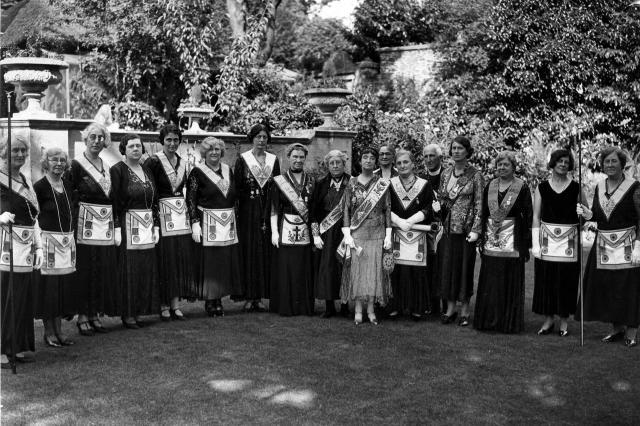We are often asked if there are women freemasons.
Yes, women can be masons.
In the United Kingdom women can join one of two grand lodges exclusively for women, either the Order of Women Freemasons (OWF) or Freemasonry for Women: The Honourable Fraternity of Ancient Freemasons (HFAF), which is also known as Freemasonry for Women. They can also join the International Order of Freemasonry for Men and Women Le Droit Humain, British Federation, which is also known as Co-Masonry.
These Grand Lodges have their origins in the late eighteenth century. At that time French lodges had begun to ‘adopt’ subsidiary lodges under what was known as ‘The Rite of Adoption’. Adoption lodges were for women masons and were attached to men's lodges. They had unique ceremonies, for example, some of The Rite of Adoption focused on Adam and Eve.

During the French Revolution and its aftermath, all French lodges stopped meeting, but were revived under the reign of Napoleon. By 1805, his Empress, Joséphine Bonaparte (1763-1814) was in charge of an Adoption lodge in Strasbourg.
In 1882 Maria Deraismes, French author and advocator for women’s rights, was initiated into a men’s lodge in Paris. Her involvement in Freemasonry sparked the creation of the International Order of Freemasonry for Men and Women Le Droit Humain (Le Droit Humain) - a form of mixed-gender freemasonry, known as Co-Masonry. These lodges admitted men and women, without the need for them to be attached to a men’s lodge. Interestingly, by this time, the Rite of Adoption lodges had been declared unconstitutional by French Grand Lodges and were no longer meeting.
At the start of the twentieth century, women-only freemasonry in France became more popular. By 1945, members had formed the Female Masonic Union and created five new women-only lodges using the old ‘adoption’ ritual. One of these lodges was La Nouvelle Jerusalem Lodge into which Josephine Baker, famed actress, dancer, activist, and French Resistance fighter was initiated in the 1960s.
Le Droit Humain in England started back in 1893. It was established by Annie Besant, a radical socialist and prolific writer. She was its president from 1909 until her death in 1933. Under Besant’s leadership, Co-Masonry in Britain was heavily influenced by theosophy (part of the Western Esoteric tradition), in which she was also closely involved. In 1907 a number of co-masons, led by a Church of England clergyman, the Reverend Dr William Cobb, decided to form a new Grand Lodge for men and women. It had authority from the governing Supreme Council in Paris, and less emphasis on theosophical elements. This group, under the leadership of their first female Grand Master, Marion Halsey, transformed into the female-only Order of Women Freemasons.
By 1913, a group of women split off from The Order of Women Freemasons as they wanted to introduce additional rituals. This new group established a second grand lodge for women, the Honourable Fraternity of Ancient Freemasons (HFAF), which is now known as Freemasonry for Women.

The women’s grand lodges enjoy good relationships with the United Grand Lodge of England. Their masonry follows a similar line. Both men and women use the same working tools as well as the same regalia, although the OWF still wear a white dress robe under the apron. They also follow tradition and refer to one another as ‘Brother’.
Both women’s grand lodges have been around for over a century. The OWF celebrated its centenary in 2008 and published The Open Door: the History of the Order of Women Freemasons and HFAF celebrated its’ Centenary in 2013 here at Freemasons’ Hall.
You can find out more about freemasonry for women from our links page or visit our research pages to find details of how to plan a visit to use our collections.

